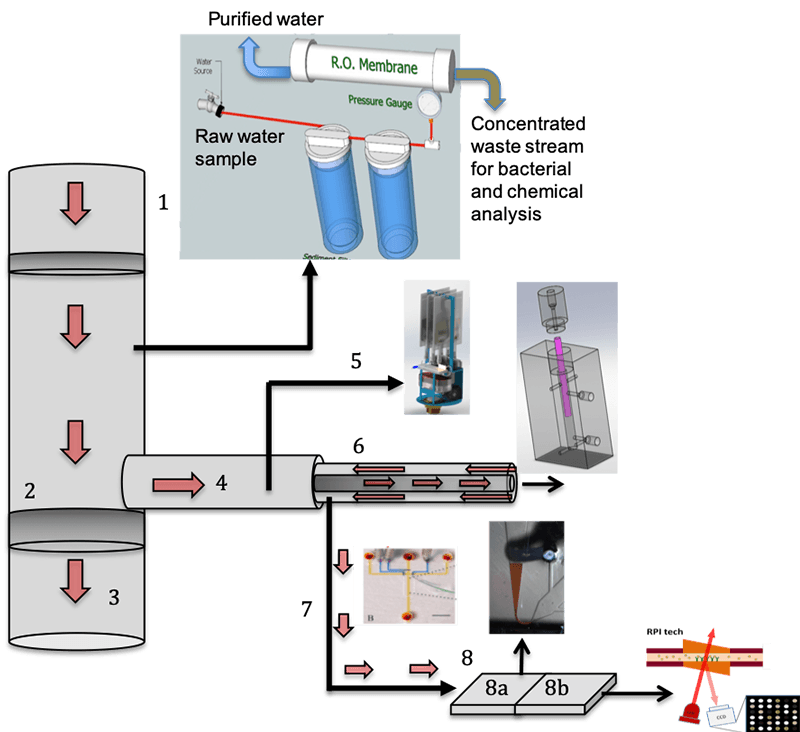Research
Project Concept
NAPES intends to create low cost deployable, autonomous environmental sensor platforms by bringing together novel technologies incorporating innovative sampling and target pre-concentration, fluid manipulation/flow control, microfluidic based sample processing and target detection using highly specific detection methods for determination of bacterial (e.g E.coli) and chemical (e.g phosphate, surfactants) contaminants in water supplies (e.g reservoirs) and evaluation of water post-treatment (e.g waste water treatment plant).

Strategy underpinning this proposal. (1) Use evolutionary improvements in existing platforms to establish credibility, deliver functioning devices and meet real measurement challenges. (2) Truly scalable chemo/bio-sensing can only be realised through revolutionary breakthroughs that emerge from fundamental materials science research. This proposal is focused on (2); research that is designed to generate revolutionary breakthroughs in sensor science.

Analysis of the cost base (€) of three generations of environmental analysers developed by partner 1. The green section is the fluidics handling contribution (dominates in all cases). Gen1 and Gen2 versions have been extensively field-deployed whereas Gen3 (‘future’) is a demonstrator concept platform integrating biomimetic polymer pumps
Objectives
- Advances in liquid/sample handling using nano/micro-structured stimuli-responsive materials. These materials will be used to create micro-scale valves for fluid control and sample manipulation.
- Develop innovative sampling strategies to allow go collection of larger than current representative samples and reduce volumes to those compatible with portable detection platforms
- Creation and integration of innovative extraction and detection schemes for highly specific detection of chemical and biological targets. Label free optical detection using water refractive index matched materials and customized lectin panels, NAPES intends to perform high sensitivity measurements of waterborne contaminants.
- Integration of novel platforms and demonstration of prototype next generation autonomous deployable systems. NAPES intends to combine state-of-the-art chemical, biological and engineering technologies to create and field test prototype systems.

Bacterial Sample Processing: Raw Samples (1) are drawn into the primary filter (2) where particulates are removed and the filtered sample proceeds to the Reverse Osmosis sampling stage (3). The purified fraction leaves (4) and the concentrate (5, x1.3 to x4 increase in concentration) passes to the counter-flow tubular filter (6) where further pre-concentration of bacterial content occurs (x30 to x100). Samples from the two-stage concentrate (7) pass into the microfluidic system (8) for further processing (8a, selective E.coli bead concentrator), prior to detection (ISO-RI detection, 8b). Samples from the concentrate at (5) will also be taken and passed directly to the existing analyser platform (9) to examine the potential to improve LOD and sensitivity for existing well-established methods e.g. for nutrients. This should provide a low-risk route to improved specifications for a range of chemical analytes.
- Commercialisation of next generation detection platforms.The NAPES consortium brings together academic research institutions and private industrial partners which encourages long-term strategies for productisation and scale-up of production in parallel to technical and scientific activities. This encourages research to be focused upon the creation of novel components and final platforms that will have practical application outside of the lab environment.
